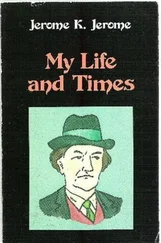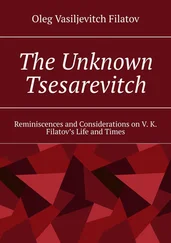On the surface there were few other clues. As a student Bronwen drifted away from any sort of formal church attendance. What she had experienced, she convinced herself, had little to do with organised religion. But with Erica it was different. ‘From the very start, all my insights into this parallel world had been about love – ‘Only love matters” is what I had heard that first time at the birthday party when I was seven. And it was so painful when Erica died, that I thought I had to stop loving. But equally I knew I couldn’t harden my heart. For a while I just shut down. That was my way of coping.’
And she might have remained ‘shut down’, closed to this other world, perhaps for ever, had not her meeting with L. A. G. Strong prompted her to follow her heart. Having a go at modelling became a small part of what was ultimately a wider liberation and discarding of conventional restraints that helped to form her later self. It was the outward sign that something had changed within her, but she did not know quite what for another eight years. Modelling gave her the space to find out.
Although hitherto she had had little inclination for books, after Erica’s death Bronwen became an uninhibited and often daring reader, working her way through a constant stream of sometimes enlightening and some disappointing texts – history, fiction, science, religion, psychology. Occasionally in the course of her life she has come across a book that has changed the way she thinks or opened up another perspective. Having, by her own choice, missed out on a university education, she has taught herself through books.
She was introduced to the writings of Georgei Ivanovitch Gurdjieff (1874–1949) and his sometime disciple Peter Demianovitch Ouspensky (1879–1947). Both had died recently and she was directed to them, casually, by someone she met at a party. ‘You can imagine what I was like at parties then, very intense, always wanting to talk about ideas and only interested in people if they had something interesting to say.’
In the late 1940s and early 1950s among a younger generation of readers reacting, it has subsequently been suggested, to the recent world war with an abnormal degree of introspection and an over-eager and sometimes naive search for alternative paths, Gurdjieff and Ouspensky achieved the sort of cult status later enjoyed by Indian mystics in the sixties. They were, for Bronwen and many others in that period, a revelation and a first introduction to psychology.
Both were Russian, though Gurdjieff had Greek parents. Both were fascinated by the occult and experiments to prove that magic had an objective worth. But their enduring influence – certainly in Bronwen’s life – was their emphasis on the need for each individual to develop psychological insights in order to grow into a new state of higher consciousness. Such insights, she came to believe, could bridge the gap between her everyday world and the spiritual world she had glimpsed.
About Gurdjieff himself opinions were divided, even in his lifetime. His supporters – who included the New Zealand-born short-story writer, Katherine Mansfield – regarded him as a prophet and philosopher without equal. Kenneth Walker, a writer who was one of many who were drawn to the Institute for the Harmonious Development of Man in Fontainbleau, described its leader as ‘the arch disturber of self-complacency’, but the press at the time and historians subsequently have judged Gurdjieff less kindly. R. B. Woodings, the distinguished chronicler of twentieth-century thought, sums him up thus: ‘His ideas are not original, his sources can be readily traced and the movement he stimulated was obviously part of reawakening of interest in the occult in the earlier part of this century.’ However, Woodings is in no doubt about the impact of Gurdjieff. ‘Whether charlatan, mystic, scoundrel or “master”, he exercised remarkable authority charismatically over his disciples and by reputation over much wider American and European circles.’
Ouspensky – for nine years until 1924 Gurdjieff’s self-appointed ‘aposde’ – was no less popular and now enjoys a little more academic credibility. Again he inspired a cult-like following, based on his estate at Virginia Water in Surrey, but he had a sounder grasp of philosophy than Gurdjieff and had studied both mathematics and Nietzsche before dabbling in the occult and theosophy, the belief system promoted in the late nineteenth and early twentieth century by his fellow Russian Helena Blavatsky and her American associate, Henry Steele Olcott, which embraced Hindu ideas of karma and reincarnation.
And it was Ouspensky who made the greater impact on Bronwen. His The Fourth Way , published soon after his death in 1947, brought together many of the ideas he had relentlessly explored in his lifetime. It introduced Bronwen to eastern thought, which she found considerably more attractive than Christianity, and it described in detail his ‘system’ for greater self-knowledge and enlightenment. ‘The chief idea of this system,’ he wrote, ‘was that we do not use even a small part of our powers and forces. We have in us, a very big and very fine organisation, only we do not know how to use it.’ The idea, then, was to study oneself, following Ouspensky’s guidance.
This ranged from the mundane to the enlightening to the foolish. ‘We are divided,’ he claimed, ‘into hundreds and thousands of different “I”s. At one moment when I say “I”, one part of me is speaking, at another moment when I say “I” it is quite another “I” speaking. We do not know that we have not one “I”, but many different “I”s connected with our feelings and desires and have no controlling “I”. These “I”s change all the time; one suppresses another, one replaces another, and all this struggle makes up our inner life.’
To a young, impressionable woman who felt herself torn between the material and spiritual parts of her life, such ideas appeared attractive. She had already realised that she had two apparently contradictory impulses pushing her forward. One was the outgoing, fun-loving, meet-any-challenge, sporty side that was now drawing her to modelling. The other – a legacy, she was sure, from her Welsh ancestors – was driven by a solitary, contemplative, inward-looking instinct that made her want to run away from the world, curl up in a ball and search through books and thought for an answer to why Erica had died in such a tragic way. Ouspensky helped her at least to recognise these two faces within herself and gave her clues as to their origins.
When later he talked about the ‘negative emotions’ bequeathed by childhood and parents and the need to confront these in order to move to a higher level of consciousness, Ouspensky was speaking directly to Bronwen’s own experience, but it would be a mistake to imagine that she became any sort of convert to his cult. She was enthusiastic about her introduction to psychology and to discussions of levels of consciousness – Ouspensky declared there were four – and she was heartened to know that others too were struggling with the sort of questions she had hitherto tackled in secret and largely alone, but Ouspensky was simply a starting point.
In the light of her subsequent determination to combine psychological insights with organised religion – though of course at this time she was a lapsed Anglican – Ouspensky’s antipathy to belief should be noted. Despite borrowing from eastern and western religious creeds, Ouspensky boasted that his system ‘teaches people to believe in absolutely nothing. You must verify everything that you see, hear or feel.’ And some of the conclusions to which he took initially attractive ideas appeared ridiculous, even to one as inexperienced and naive as Bronwen at that stage. His theories about the effect of earthly vibrations on the mind and his peculiar mathematical tangle, ‘the ray of Creation’, ascribing numerically quantified ‘forces’ to a series of worlds (which themselves were listed from one to ninety-six) must have been difficult for even the most avid follower to swallow.
Читать дальше












